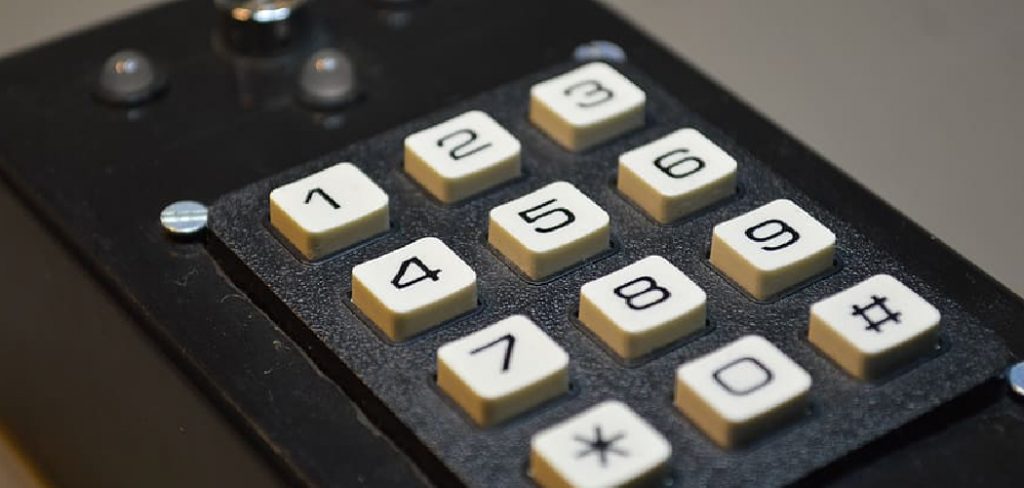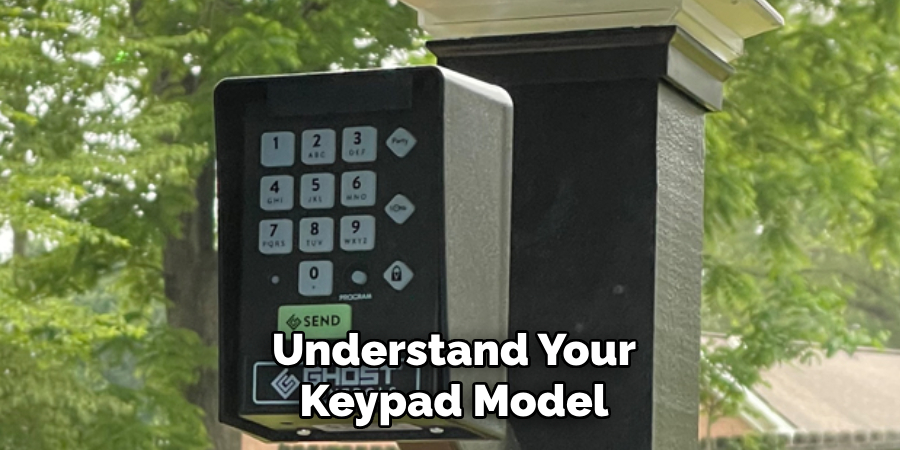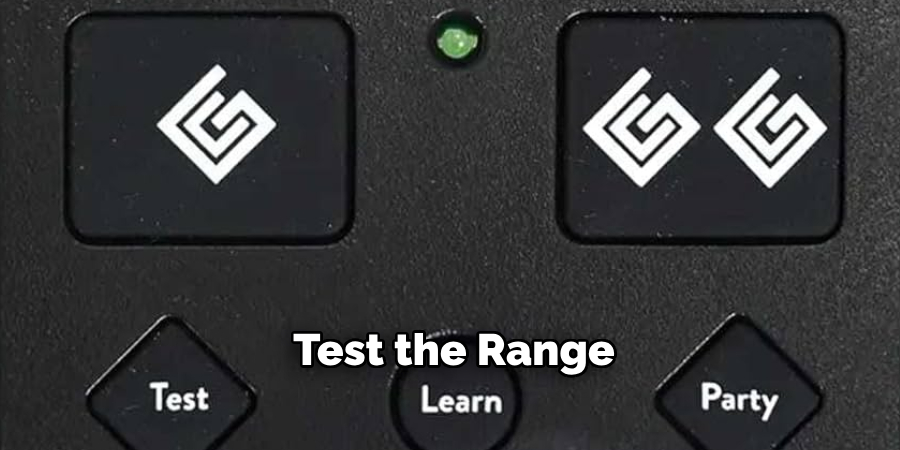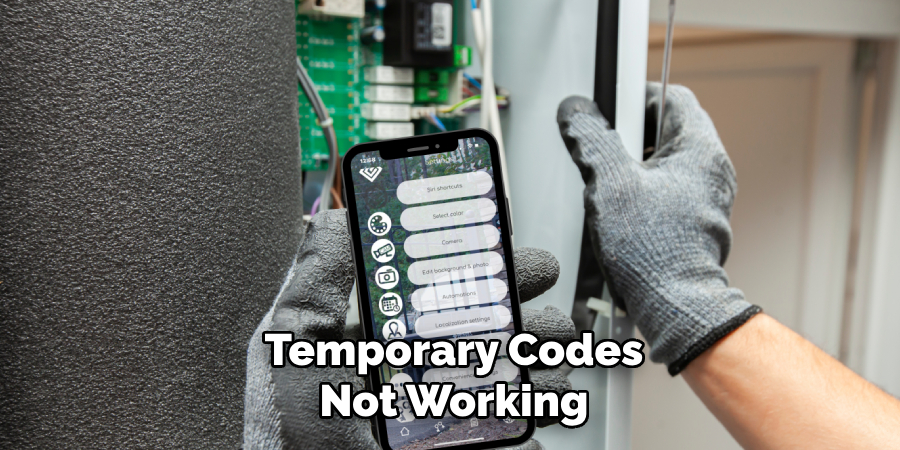Programming the Ghost Control Keypad allows you to customize its functionality to meet your specific needs. Whether you’re setting up your keypad for the first time or updating an existing configuration, the process is straightforward and user-friendly. This guide will walk you through the necessary steps how to program ghost control keypad correctly and operates seamlessly with your Ghost Control system.

Benefits of Programming the Keypad
Programming the Ghost Control Keypad offers numerous advantages, enhancing both convenience and security. First, it allows for personalized access codes, ensuring that only authorized individuals can operate the system. This adds an extra layer of protection to your property. Additionally, a programmed keypad streamlines access, eliminating the need for physical keys or remotes. It also enables easy updates or changes to access settings if needed, adapting seamlessly to your evolving requirements. By taking the time to program your keypad, you ensure a more efficient and secure gate system tailored to your preferences.
Understanding the Ghost Controls Keypad
The Ghost Controls Keypad is a versatile and durable device designed to fit seamlessly into your automated gate system. Built with a weather-resistant exterior, it ensures reliability in various environmental conditions. The keypad features an illuminated, easy-to-use interface, making it accessible even in low-light situations. It supports multiple customizable access codes, enabling shared access for family members, visitors, or service providers while maintaining security. With its sleek design and advanced technology, the Ghost Controls Keypad is a critical component for effortless and secure gate operation.
10 Methods How to Program Ghost Control Keypad
1. Understand Your Keypad Model
Before you begin programming, double-check which Ghost Controls keypad model you’re using. Some features or steps can vary depending on the model. Review the manual that came with your keypad or visit the Ghost Controls website for specific instructions.

Tip:
For the most common models, the specifications are usually printed on the back of the keypad or inside the battery compartment.
2. Gather the Required Materials
To program your keypad, you’ll need access to the gate control box, the programming instructions, and your keypad. Ensure the keypad has a fresh battery installed to prevent interruptions during the setup.
Example:
According to Ghost Controls, their AAA-powered keypads typically provide at least 1–2 years of operation with standard use.
3. Set Up a Master Code
The master code is essential for programming and managing future changes to your keypad. Locate the keypad’s “PROGRAM” button inside the battery compartment to initiate setup. Once prompted, enter your desired master code.
Tip:
Use a strong, memorable code, like a combination of numbers that aren’t easily guessed. Avoid birthdates or repeated digits.
4. Add Primary User Entry Codes
Primary user entry codes are the ones you’ll use daily to open and close your gate. Enter “PROGRAM,” followed by your master code, and then the new primary code of your choice. Be sure to test it after programming to confirm that it operates the gate correctly.

Example:
For many models, the default user code length is typically 4 to 6 digits long.
5. Set Temporary Access Codes
Temporary codes grant short-term access to your gate—for example, to delivery personnel or contractors. Follow the same programming process as with primary codes, but set an expiration time for the temporary code, if your model supports it.
Pro Tip:
This feature makes it much easier to maintain security while providing flexibility for one-time access needs.
6. Erase Old Codes
Regularly updating or erasing old codes enhances your gate’s security. To erase a single code, input the “PROGRAM” button, the master code, and then the code you want to delete. To clear all user codes, reset the keypad to factory settings. This will require reprogramming all codes.
Example:
Factory resets vary by model, but you’ll typically need to hold down the “PROGRAM” button for 10–15 seconds.
7. Test the Range

Once programmed, test the keypad from different distances to ensure it communicates effectively with the gate control box. If the keypad has difficulty connecting, try adjusting its location slightly or ensure there is no interference.
Tip:
Ghost Controls recommends placing the keypad within 50 feet of the control box for the most reliable performance.
8. Use the “Party” Mode Setting
The Party Mode feature lets you temporarily hold the gate open. To enable it, input your master code or Party Mode code (if set). When it’s active, the gate remains open for guests or deliveries until you manually turn it off.
Example:
This is especially useful for events, gatherings, or large deliveries where the gate needs to stay open for an extended period.
9. Replace or Update Batteries
If the keypad becomes unresponsive, the batteries may need replacing. Use high-quality AAA batteries to ensure long-lasting performance. Always check the battery compartment for any signs of corrosion before installing new batteries.
Tip:
It’s a good idea to keep spare batteries nearby so you can replace them quickly in case of unexpected outages.
10. Consult the Manual or Customer Support for Troubleshooting
If you encounter any issues during programming, refer to the user manual or reach out to Ghost Controls’ customer support. They can assist with specific troubleshooting steps or identify if the keypad needs repairs.
Tip:
Ghost Controls also offers tutorial videos and FAQs on their website to simplify troubleshooting.
Maintenance and Upkeep
Proper maintenance of your Ghost Controls keypad is crucial to ensuring its longevity and consistent performance. Regularly inspect the keypad to remove any dirt, dust, or moisture that might accumulate over time. Clean the surface gently with a soft, damp cloth and avoid using harsh chemicals that could damage the keypad’s finish. Check the battery compartment periodically to ensure there is no corrosion or battery leakage, and replace the batteries as needed to prevent disruptions in operation.
Perform routine tests to verify that all programmed codes are functioning correctly and the keypad is communicating reliably with the gate control box. If you notice any issues, such as delayed response times or unresponsive buttons, consult the user manual for specific troubleshooting steps. Additionally, keep the keypad securely mounted and protected from extreme weather conditions, even if it is designed to be weather-resistant.
By following these maintenance tips, you can extend the lifespan of your Ghost Controls keypad and maintain optimal performance for years to come. Regular upkeep not only enhances reliability but also ensures your gate’s security remains uncompromised.
Troubleshooting Common Issues
Even with regular maintenance, you may occasionally encounter issues with your Ghost Controls keypad. Here are some common problems and their potential solutions to help you resolve them quickly:
1. Keypad Not Responding
If the keypad does not light up or respond when you press the buttons:
- Check the Batteries: Ensure the batteries are installed correctly and have sufficient charge. Replace them with new, high-quality AAA batteries if needed.
- Inspect for Corrosion: Look inside the battery compartment for any signs of corrosion or damage. If corrosion is visible, clean it carefully using a cotton swab and a small amount of vinegar or baking soda solution.
- Reset the Keypad: Perform a factory reset by holding down the “PROGRAM” button for 10–15 seconds, then reprogram your codes as needed.
2. Gate Not Opening or Closing
If the keypad lights up but the gate does not respond:
- Verify the Code: Double-check that you are entering the correct code. If you suspect the code may have been erased, reprogram it using your master code.
- Test the Range: Ensure the keypad is within the recommended distance (usually 50 feet) of the gate control box. Relocate the keypad if necessary.
- Check Interference: Remove any nearby electronic devices or large metal objects that might be interfering with the keypad’s signal.
3. Delayed Response Times
If the gate responds slowly after entering the code:
- Replace the Batteries: Low battery power can cause signal delays. Install fresh batteries to improve performance.
- Inspect for Obstructions: Ensure that the gate’s path is clear of any physical obstructions that may hinder its movement.
- Check Signal Strength: Weak signals can cause delays. Try repositioning the keypad or ensuring there are no obstacles between the keypad and the control box.
4. Temporary Codes Not Working

If temporary codes fail to operate the gate:
- Confirm the Expiration Time: Verify that the temporary code has not expired. If it has, create a new temporary code with the desired time frame.
- Reprogram the Code: Delete the faulty temporary code and reprogram a new one, following the instructions in the manual.
5. Buttons Sticking or Unresponsive
If the buttons are not pressing correctly or seem stuck:
- Clean the Keypad: Gently clean around the buttons using a soft, damp cloth to remove any dirt or debris. Avoid using abrasive cleaners or excessive moisture.
- Inspect for Physical Damage: Check the keypad for any cracks or damage that may be affecting button functionality. If damaged, consider contacting Ghost Controls for repairs or a replacement.
Conclusion
Maintaining and troubleshooting your Ghost Controls keypad is vital to ensuring the security and reliability of your gate system. By adhering to proper maintenance routines, such as keeping the keypad clean, inspecting the battery compartment, and regularly testing codes, you can prevent common issues before they arise. Should any problems occur, following the outlined troubleshooting steps will help resolve them quickly and minimize disruptions. Thanks for reading our blog post on how to program ghost control keypad! We hope you found it helpful and informative.
About
Safety Fic is a distinguished figure in the world of Diy design, with a decade of expertise creating innovative and sustainable Diy solutions. His professional focus lies in merging traditional craftsmanship with modern manufacturing techniques, fostering designs that are both practical and environmentally conscious. As the author of diy, Safety Fic delves into the art and science of Safety Fic-making, inspiring artisans and industry professionals alike.
Education RMIT University
(Melbourne, Australia) Associate Degree in Design (Safety Fic) Focus on sustainable design, industry-driven projects, and practical craftsmanship. Gained hands-on experience with traditional and digital manufacturing tools, such as CAD and CNC software.
Nottingham Trent University
(United Kingdom) Bachelor’s in diyfastly.com and Product Design (Honors) Specialized in product design with a focus on blending creativity with production techniques. Participated in industry projects, working with companies like John Lewis and Vitsoe to gain real-world insights.
Publications and Impact
In diy, Safety Fic his insights on indoor design processes, materials, and strategies for efficient production. His writing bridges the gap between artisan knowledge and modern industry needs, making it a must-read for both budding designers and seasoned professionals.
